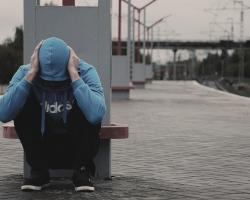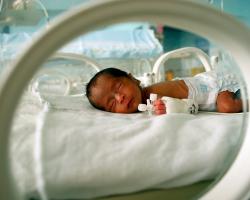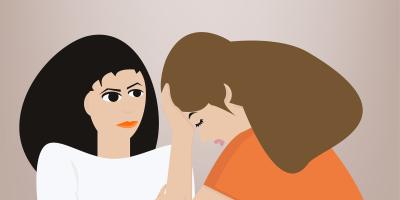Rare diseases are not as rare as their name would suggest. It is possible that as many as 2 million people are suffering from them in Poland, as they affect about 6 percent of the population.
President of ORPHAN Rare Diseases Poland, Mirosław Zieliński, estimates that there are over 6 thousand rare diseases, i.e. diseases affecting less than one person in 2 thousand. These include such conditions as phenylketonuria, cystic fibrosis, mucopolysaccharidosis II and VI, Crohn’s disease, multiple myeloma, Down syndrome, and haemophilias.
The exact number of these diseases is, however, unknown, as new types are still being discovered. Almost every week there are as many as five completely new rare diseases described in the literature. Many neoplasms are also categorised as rare diseases.
Blue-Jeans Denim Ribbon diseases
Rare diseases usually have a genetic background, often taking the form of a mutation in just one gene coding an important protein or enzyme. E.g. Fabry disease or Niemann-Pick disease—the so-called lysosomal storage diseases—are caused by a deficiency of just one enzyme. As the English words genes and jeans are homophones, the blue-jeans denim ribbon has become a symbol of support for people suffering from rare diseases.
In most cases, these diseases are diagnosed at an early age—children constitute as many as 70 percent of all patients. According to Professor Jolanta Sykut-Cegielska from the Children’s Memorial Health Institute in Warsaw, one in two of these children does not survive into adulthood.
For example, Ola, 11, has been suffering from Leigh’s disease (juvenile subacute necrotizing encephalomyelopathy) for eight years. The disease manifests itself relatively early, usually between the child’s third and twenty-fourth month of life. Ola was three years old when she fell ill and has been increasingly disabled since then. She is unable to walk, hardly able to speak and can’t keep her balance on her own. She has epileptic fits, uncontrolled muscle tension and myalgia, as well as dystonia (involuntary movements causing the twisting and bending of various parts of the body).
People affected by rare diseases require special care, as they not only suffer, but also feel socially excluded.
“They are in need of special support so that they don’t feel lost, rejected, and lonely," stresses Anna Dymna, the founder and President of the “Mimo Wszystko" Foundation. In her view, loneliness can be a greater suffering than the disease itself. She explains that all too often people suffering from rare diseases are not understood, as they differ even from people with “regular" disabilities.
In need of specialised treatment
Mirosław Zieliński emphasises that rare diseases often require specialised treatment. This is problematic, because patients and their families often find it very difficult to be admitted to the right specialists. What’s more, in most cases, the costs of therapy are so high that they are not always an option.
The treatment of Hunter syndrome affecting at least 20 children in Poland costs nearly PLN 800-900 thousand a year. This disease is caused by the lack of just one enzyme. Its symptoms include distinct facial features; enlarged head and abdomen, problems with breathing, walking and hearing, and also cardiac defects and brain damage.
Most cases of rare diseases are diagnosed by accident. Only some of them can be discovered during screening tests. In Poland, we have a well-developed procedure for diagnosing 20 inborn errors of metabolism. This is performed through screening tests involving taking a blood sample in hospital and covers 52 percent of infants.









Comments (0)